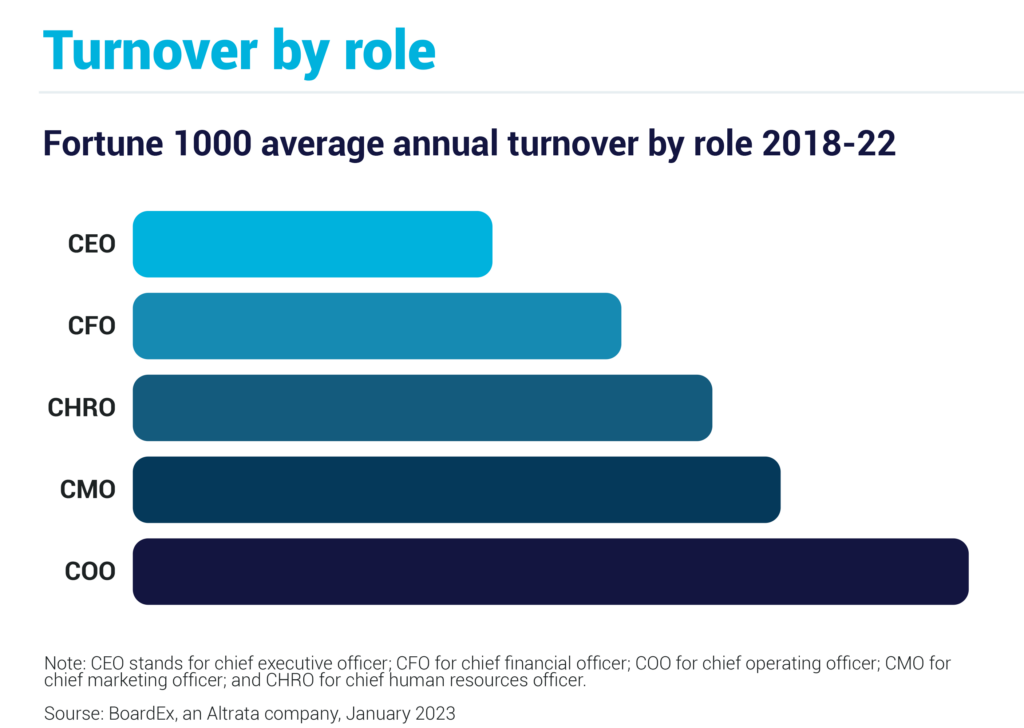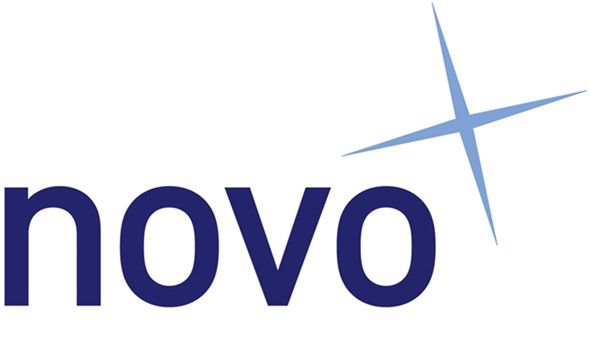Understanding the Surge in Executive Turnover

A surge in executive turnover in 2023 is reshaping boardrooms worldwide and has far-reaching implications for organizational success. Retaining talent is crucial, given that hiring new employees is costly. It takes 40 days on average to find new talent and costs businesses 35 percent of an employee’s annual salary. Retaining executive talent is especially important as longer CEO tenures have been linked to greater shareholder value because the company benefits from the accumulated experience, knowledge, and relationship capital. Let’s explore the significance of this shift in turnover and see what the numbers reveal about the landscape at the management level. We’ll also look at the sectors and the C-suite roles that experienced the most disturbance in the past 5 years and what they teach us.
First, turnover is not confined to executives alone; the UK is witnessing average employee turnover rates of over 40%, while the US rate is even higher. Notably, entry-level and director-level positions bear the brunt with a 35% turnover rate in 2023.
While 2022 saw relatively calm waters for the C-suite, with a turnover increase of less than 1% for the five key positions, 2023 tells a different story. The first quarter of the year marked a record-high in CEO turnover, a surge of almost 50% compared to the same period last year, with over 1400 CEOs departing. This constitutes the biggest turnover in more than two decades, according to a recent report by Challenger, Gray, and Christmas.
The retail sector witnessed the highest CEO exits this year, encompassing leaders from Bed Bath & Beyond, Heinz, Dollar General, and Rhode Beauty. Noteworthy non-retail CEO departures included figures like PayPal’s successor Dan Schulman, Synopsys, and Restaurant Brands International (QSR) CEO José Cil.
A significant portion of the increased executive attrition during 2023 can be attributed to the pandemic. Many companies retained their leadership during uncertainty, and so CEO turnover remained stable in 2022. Post-pandemic, as the situation stabilized, the leaders had the opportunity to retire. According to the same report, a considerable 22% retired, 27% transitioned within their companies, and 31% declined to specify a reason for their departure.
Beyond pandemic effects, a paradigm shift in priorities and job satisfaction is evident. A recent Deloitte report reveals, that mental health and well-being are more important than salary to 81% of executives and 70% are seriously considering switching companies for better well-being support. Individuals are realizing that they shouldn’t have to tolerate bad conditions for a title and paycheck.
C-Suite Turnover in the past 5 years
Over the past five years, C-suite turnover remained relatively stable, experiencing a drop in 2021, likely due to efforts to retain existing leadership during the pandemic. While we don’t have the full picture for 2023, however, the first three quarters of 2023 witnessed a surge in resignations, with CEO turnover spiking by 50% compared to the same period last year.
| Year | Turnover Rate |
| 2018 | 20.1% |
| 2019 | 20.1% |
| 2020 | 18.44% |
| 2021 | 17.94% |
| 2022 | 18.58% |
In Picture: executive turnover rates in the USA of Fortune 1000 companies by year. Source: BoardEx
C-Suite Turnover by Role
Analyzing turnover by role, the influential CEO and CFO positions surprisingly exhibited the lowest turnover over the past five years at 12% and 16% respectively. Given that these two positions exert a critical influence across a business, their arrivals and departures are more momentous and necessarily less frequent.
Conversely, COOs and CMOs tell a different tale, experiencing high leadership turnover rates at 27% and 21%, respectively. We can understand the reason behind this difference by looking at the nature of these roles. The COO gig leans towards execution, shouldering the load of strategically adapting to evolving business conditions and owning up to failures. Plus, the role isn’t one-size-fits-all; it varies by company and sector, making it challenging to fill at times. The CMO’s success hinges on its close dance with the CEO. Marketing cycles put a unique kind of pressure on CMOs. CMOs need to align with the CEO’s vision and are sometimes even expected to drive growth beyond traditional marketing communications.

In Picture: Average C-suite turnover in the USA of Fortune 1000 companies by role. Source: BoardEx
C-Suite Turnover by Sector: Identifying Patterns
When examining turnover by industry, sectors vulnerable to shock and disruption experienced high turnover during 2018-22.
The health sector recorded one of the highest turnovers for both CEOs (15%) and CFOs (18%) in the past 5 years. This likely reflects the increased pressure on medical companies during the pandemic. The leisure and hotel sector experienced a 16% CEO turnover. The hospitality industry has historically had a high turnover rate which was amplified by the pandemic.
Additionally, the technology sector saw the third-highest CEO turnover at an average annual rate of 13.4%, reflecting the sector’s dynamic nature with frequent M&As and restructuring. The tech sector has multiple opportunities pulling CEOs away from their current roles.
Costs of Executive Turnover: Unveiling Hidden Expenses
The costs of executive turnover are staggering, ranging from three to four times the position’s salary for high-level executives, according to SHRM. Stanton’s report places this figure closer to a half to two times the salary. For mid-market companies, CEO turnover costs $1.8 million, COO turnover costs $1.15 million, and CFO turnover costs $983,700 for top talent.
These costs encompass both hard and soft expenses. Hard costs, constituting 30-40%, involve hiring processes, onboarding, training, and ongoing compensation. Soft costs, accounting for 60-70%, include the time invested by department leaders in supporting the HR roles of the hiring process, taking away time from accomplishing organizational goals/outcomes.
Factors Contributing to the Drop in Executive Retention
The primary factor contributing to the decline in executive retention is the flux in the economic landscape, as highlighted by Andrew Challenger, Senior Vice President at Challenger Gray. Companies are adapting to changes in labour costs and interest rates. Fatigue and lack of support also play significant roles, with a Deloitte survey revealing that almost 70% of executives are contemplating leaving their roles for workplaces prioritizing their well-being. While this encapsulates key aspects, a comprehensive examination is necessary to fully understand this shift.
In conclusion, whilst poor retention can harm a company’s bottom line, a good employee retention rate can yield powerful benefits for long-term success. In the current ‘talent economy,’ companies excelling in attracting, training, and retaining leaders are poised for sustained success. While there’s no one-size-fits-all solution to executive retention, it’s crucial to use diverse strategies to craft a unique retention strategy for your company.
References:
https://www.challengergray.com/blog/ceo-exits-continue-record-clip-164-ceos-leave-their-posts-in-september-2023-q3-highest-quarterly-total-on-record/
https://www.stantonchase.com/insights/white-papers/the-quiet-and-expensive-cost-of-poor-c-suite-retention
https://www.shrm.org/resourcesandtools/tools-and-samples/toolkits/pages/managingforemployeeretention.aspx
https://www2.deloitte.com/us/en/insights/topics/leadership/employee-wellness-in-the-corporate-workplace.html












